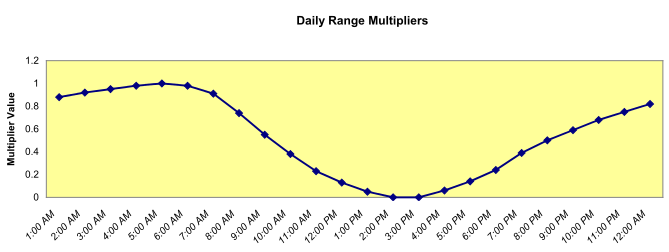Information on design day creation for EnergyPlus / DesignBuilder
Hi, I have climate data of a period (hourly, 30 years), and I am trying to select summer design days (based on drybuld T, wetbuldT, dewpoint T, etc.) and heating design days. I do NOT want to use the ASHRAE values, however I would like to use a similar technique based on my own dataset.
I looked into my 30 years of hourly data, so in my 262800 hours and I looked up the 99.6% for instance. What I find is that the temperature is about 30°C, but at 5pm. That same day, in my dataset, the maximum temperature is at 31°C at 3pm. My question is, is the design day a fictive day or a real day ? On a first attempt, I would like to use this design day in DesignBuilder, i.e. the yearly summer design day based on dry bulb T to size an AC unit in my building. DB requires the maximum Temperature and minimum Temperature of the day, and the coincident wet bulb Temperature (which I would assume is coincident to the max dry T??)
My questions are :
- Should I use 30°C for the maximum dry T since it corresponds to the 99.6 %, and its equivalent wet bulb T ?
- Then what should I use for the minimum dry T ? I have thought about looking into my 262800 hours and looking only at daily maximum Temperatures, but then this reduces my set to 10950 hours (262800/24). 99.6% of 262800 is not the same as 99.6% of 10950, so I think this is wrong but I am not sure...
Any help on this matter would be appreciated, if tried a lot to understand :) Thanks!





